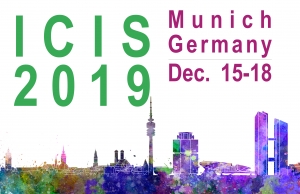Paper ID
3144
Description
Designers are increasingly using autonomous tools to perform complex activity more quickly and in different ways, often with little or no human intervention. These autonomous tools are changing the way many designers approach their work, and the creative outcomes of that work. On the one hand, autonomously generated designs might not provide the same creative user experience as manually designed con-tent, because autonomous tools are fundamentally deterministic in nature. On the other hand, the potentially creative benefits of using autonomous tools relate to the potential variety—that may be perceived as unpredictability by the designers—of their output. We report on a study of three cases of video game development that use procedural generation of content and we theorize about how organizations manage for creative user experiences when using autonomous tools in videogame production. We find that they address the inherent tension between determinism and variety by using a set of modular design practices that help guide autonomous tools in ways that allow for open-endedness and creativity. We refer to these practices as “architectural structuring” and “injecting variety” and we propose that the “level of modularity” as well as the “level of manual design” are critical for creative outcomes. We generate propositions associated with the two practices.
Recommended Citation
Seidel, Stefan; Berente, Nicholas; and Gibbs, John, "Designing with Autonomous Tools: Video Games, Procedural Generation, and Creativity" (2019). ICIS 2019 Proceedings. 14.
https://aisel.aisnet.org/icis2019/future_of_work/future_work/14
Designing with Autonomous Tools: Video Games, Procedural Generation, and Creativity
Designers are increasingly using autonomous tools to perform complex activity more quickly and in different ways, often with little or no human intervention. These autonomous tools are changing the way many designers approach their work, and the creative outcomes of that work. On the one hand, autonomously generated designs might not provide the same creative user experience as manually designed con-tent, because autonomous tools are fundamentally deterministic in nature. On the other hand, the potentially creative benefits of using autonomous tools relate to the potential variety—that may be perceived as unpredictability by the designers—of their output. We report on a study of three cases of video game development that use procedural generation of content and we theorize about how organizations manage for creative user experiences when using autonomous tools in videogame production. We find that they address the inherent tension between determinism and variety by using a set of modular design practices that help guide autonomous tools in ways that allow for open-endedness and creativity. We refer to these practices as “architectural structuring” and “injecting variety” and we propose that the “level of modularity” as well as the “level of manual design” are critical for creative outcomes. We generate propositions associated with the two practices.


